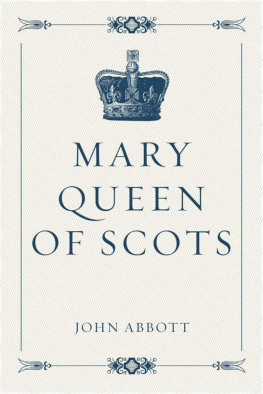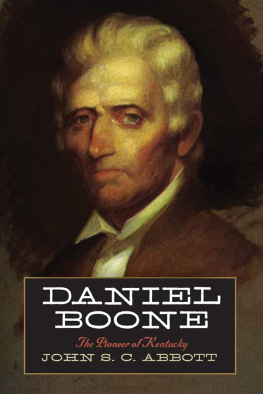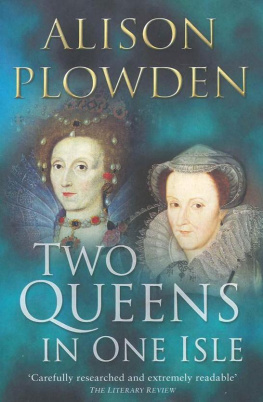Abbott John Stevens Cabot - Mary : Queen of Scots
Here you can read online Abbott John Stevens Cabot - Mary : Queen of Scots full text of the book (entire story) in english for free. Download pdf and epub, get meaning, cover and reviews about this ebook. year: 1861, publisher: Wallachia Publishers;Harper, genre: History. Description of the work, (preface) as well as reviews are available. Best literature library LitArk.com created for fans of good reading and offers a wide selection of genres:
Romance novel
Science fiction
Adventure
Detective
Science
History
Home and family
Prose
Art
Politics
Computer
Non-fiction
Religion
Business
Children
Humor
Choose a favorite category and find really read worthwhile books. Enjoy immersion in the world of imagination, feel the emotions of the characters or learn something new for yourself, make an fascinating discovery.
- Book:Mary : Queen of Scots
- Author:
- Publisher:Wallachia Publishers;Harper
- Genre:
- Year:1861
- Rating:5 / 5
- Favourites:Add to favourites
- Your mark:
- 100
- 1
- 2
- 3
- 4
- 5
Mary : Queen of Scots: summary, description and annotation
We offer to read an annotation, description, summary or preface (depends on what the author of the book "Mary : Queen of Scots" wrote himself). If you haven't found the necessary information about the book — write in the comments, we will try to find it.
Mary : Queen of Scots — read online for free the complete book (whole text) full work
Below is the text of the book, divided by pages. System saving the place of the last page read, allows you to conveniently read the book "Mary : Queen of Scots" online for free, without having to search again every time where you left off. Put a bookmark, and you can go to the page where you finished reading at any time.
Font size:
Interval:
Bookmark:
WALLACHIA PUBLISHERS
Thank you for reading. In the event that you appreciate this book, please consider sharing the good word(s) by leaving a review, or connect with the author.
This book is a work of nonfiction and is intended to be factually accurate.
All rights reserved. Aside from brief quotations for media coverage and reviews, no part of this book may be reproduced or distributed in any form without the authors permission. Thank you for supporting authors and a diverse, creative culture by purchasing this book and complying with copyright laws.
Copyright 2015 by John Abbott
Interior design by Pronoun
Distribution by Pronoun
Mary Queen of Scots
By
John Abbott
Mary Queen of Scots
Published by Wembley Press
New York City, NY
First published circa 1877
Copyright Wembley Press, 2015
All rights reserved
Except in the United States of America, this book is sold subject to the condition that it shall not, by way of trade or otherwise, be lent, re-sold, hired out, or otherwise circulated without the publishers prior consent in any form of binding or cover other than that in which it is published and without a similar condition including this condition being imposed on the subsequent purchaser.
About Wembley Press
Wembley Press is an authoritative source for books about English history, from prehistory to modern times.
Of the unfortunates of history, few touch our sympathies so deeply as Mary Queen of Scots, though perhaps in so doing we allow her beauty, her grace and her rare accomplishments to influence us too strongly, for history cannot acquit her of grave error. Half French by birth and wholly French by education, she dazzled the brilliant court of which she became queen, when suddenly her gorgeous diadem vanished, and she was torn from her beloved France to be thrust upon stern and rugged Scotland. A foreigner to the land of her birth, she commenced a series of missteps, followed exultantly by her watchful rival on the English throne; and, at last, driven from her throne by her outraged subjects, she cast herself blindly upon Elizabeths generosity. That generosity was Fotheringay.
Marys Childhood
Travelers who go into Scotland take a great interest in visiting, among other places, a certain room in the ruins of an old palace, where Queen Mary was born. Queen Mary was very beautiful, but she was very unfortunate and unhappy. Every body takes a strong interest in her story, and this interest attaches, in some degree, to the room where her sad and sorrowful life was begun.
The palace is near a little village called Linlithgow. The village has but one long street, which consists of ancient stone houses. North of it is a little lake, or rather pond: they call it, in Scotland, a loch. The palace is between the village and the loch; it is upon a beautiful swell of land which projects out into the water. There is a very small island in the middle of the loch and the shores are bordered with fertile fields. The palace, when entire, was square, with an open space or court in the center. There was a beautiful stone fountain in the center of this court, and an arched gateway through which horsemen and carriages could ride in. The doors of entrance into the palace were on the inside of the court.
The palace is now in ruins. A troop of soldiers came to it one day in time of war, after Mary and her mother had left it, and spent the night there: they spread straw over the floors to sleep upon. In the morning, when they went away, they wantonly set the straw on fire, and left it burning, and thus the palace was destroyed. Some of the lower floors were of stone; but all the upper floors and the roof were burned, and all the wood-work of the rooms, and the doors and window-frames. Since then the palace has never been repaired, but remains a melancholy pile of ruins.
The room where Mary was born had a stone floor. The rubbish which has fallen from above has covered it with a sort of soil, and grass and weeds grow up all over it. It is a very melancholy sight to see. The visitors who go into the room walk mournfully about, trying to imagine how Queen Mary looked, as an infant in her mothers arms, and reflecting on the recklessness of the soldiers in wantonly destroying so beautiful a palace. Then they go to the window, or, rather, to the crumbling opening in the wall where the window once was, and look out upon the loch, now so deserted and lonely; over their heads it is all open to the sky.
Marys father was King of Scotland. At the time that Mary was born, he was away from home engaged in war with the King of England, who had invaded Scotland. In the battles Marys father was defeated, and he thought that the generals and nobles who commanded his army allowed the English to conquer them on purpose to betray him. This thought overwhelmed him with vexation and anguish. He pined away under the acuteness of his sufferings, and just after the news came to him that his daughter Mary was born, he died. Thus Mary became an orphan, and her troubles commenced, at the very beginning of her days. She never saw her father, and her father never saw her. Her mother was a French lady; her name was Mary of Guise. Her own name was Mary Stuart, but she is commonly called Mary Queen of Scots.
As Mary was her fathers only child, of course, when he died, she became Queen of Scotland although she was only a few days old. It is customary, in such a case, to appoint some distinguished person to govern the kingdom, in the name of the young queen, until she grows up: such a person is called a regent. Marys mother wished to be the regent until Mary became of age.
It happened that in those days, as now, the government and people of France were of the Catholic religion. England, on the other hand, was Protestant. There is a great difference between the Catholic and the Protestant systems. The Catholic Church, though it extends nearly all over the world, is banded together, as the reader is aware, under one manthe popewho is the great head of the Church, and who lives in state at Rome. The Catholics have, in all countries, many large and splendid churches, which are ornamented with paintings and images of the Virgin Mary and of Christ. They perform great ceremonies in these churches, the priests being dressed in magnificent costumes, and walking in processions, with censers of incense burning as they go. The Protestants, on the other hand, do not like these ceremonies; they regard such outward acts of worship as mere useless parade, and the images as idols. They themselves have smaller and plainer churches, and call the people together in them to hear sermons, and to offer up simple prayers.
In the time of Mary, England was Protestant and France was Catholic, while Scotland was divided, though most of the people were Protestants. The two parties were very much excited against each other, and often persecuted each other with extreme cruelty. Sometimes the Protestants would break into the Catholic churches, and tear down and destroy the paintings and the images, acid the other symbols of worship, all which the Catholics regarded with extreme veneration; this exasperated the Catholics, and when they became powerful in their turn, they would seize the Protestants and imprison them, and sometimes burn them to death, by tying them to a stake and piling fagots of wood About them, and then setting the heap on fire.
Queen Marys mother was a Catholic, and for that reason the people of Scotland were not willing that she should be regent. There were one or two other persons, moreover, who claimed the office. One was a certain nobleman called the Earl of Arran. He was a Protestant. The Earl of Arran was the next heir to the crown, so that if Mary had died in her infancy, he would have been king. He thought that this was a reason why he should be regent, and govern the kingdom until Mary became old enough to govern it herself. Many other persons, however, considered this rather a reason why he should not be regent; for they thought he would be naturally interested in wishing that Mary should not live, since if she died he would himself become king, and that therefore he would not be a safe protector for her. However, as the Earl of Arran was a Protestant, and as Marys mother was a Catholic, and as the Protestant interest was the strongest, it was at length decided that Arran should be the regent, and govern the country until Mary should be of age.
Font size:
Interval:
Bookmark:
Similar books «Mary : Queen of Scots»
Look at similar books to Mary : Queen of Scots. We have selected literature similar in name and meaning in the hope of providing readers with more options to find new, interesting, not yet read works.
Discussion, reviews of the book Mary : Queen of Scots and just readers' own opinions. Leave your comments, write what you think about the work, its meaning or the main characters. Specify what exactly you liked and what you didn't like, and why you think so.













